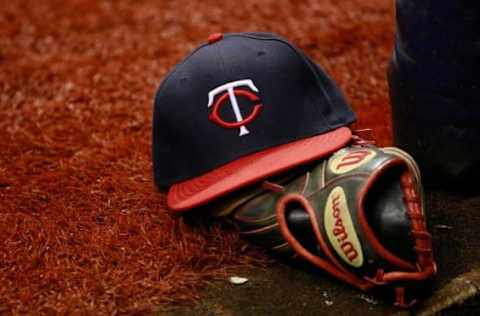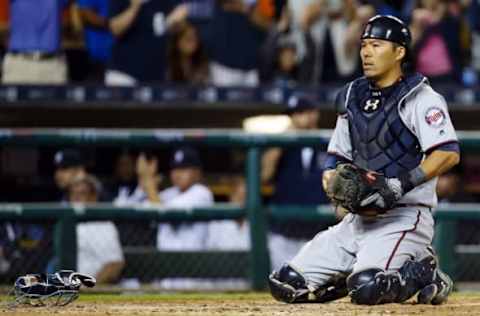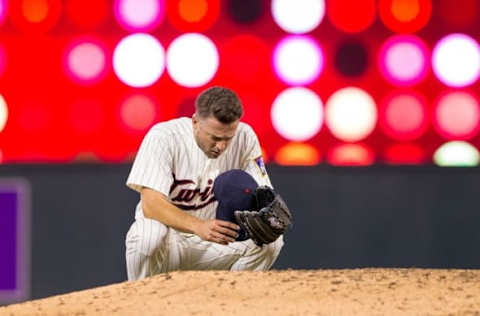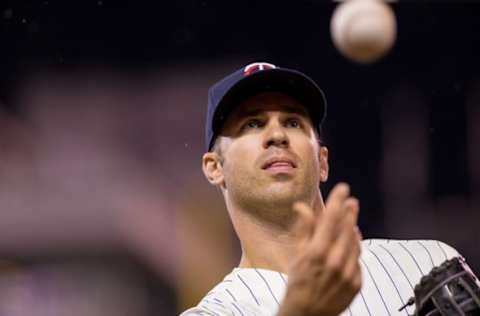Minnesota Twins Top 5 Offseason Priorities


The Minnesota Twins finished the 2016 season with a record of 59-103, worst in major league baseball. What should be the team’s priorities for the 2016-2017 offseason?
1. Front Office
The Twins fired Terry Ryan on July 18th, ending his long tenure with the team. Ryan had taken over from Andy MacPhail, who also had a lengthy tenure. Needless to say, the methodology employed by Ryan was taught to him through his predecessor and has been a presence in the organization’s philosophies for over 30 years at this point. Yes, that brought the organization 7 division titles and 2 World Series championships through that philosophy, but times have changed, and the organization’s 500-633 record since the opening of Target Field in 2010 speaks to the way the game has passed the organization by. That’s the equivalent of going 71-91 every year. No fan base would be comfortable with an organizational philosophy that is churning out 90+ loss teams ON AVERAGE!!
The hiring of Derek Falvey as president of baseball operations shows a big step in a new direction. Falvey comes from the Cleveland Indians organization, one of the most progressive organizations in the game as far as utilization of modern statistical and informational data. He has an excellent pedigree already at 33 years old.
Falvey’s first priority as P.B.O. will be to find his next General Manager, and then to decide how to proceed with the rest of the front office staff currently employed once that person is hired. Most often, a new GM will want to bring in his/her people that he/she is familiar with in order to facilitate a smooth transition, but the Twins do have some excellent young minds, especially in their scouting department, so it could be interesting to see who is kept on board and who is let go.
Regardless of the turnover, getting someone in place in the GM’s chair is the top priority to the organization going into this offseason, bar none. From there, improving the team’s make up can begin…
Next: Catching

Catching
Since hometown legend Joe Mauer moved out from behind the plate for Minnesota in 2014, the position has been manned by veteran Kurt Suzuki. The Twins were able to get Suzuki on a cheap one-year deal in 2014 after a disaster of a 2013 season split between the Washington Nationals and Oakland Athletics.
Suzuki’s time with the Twins has been solid, but leaving plenty to be desired. He hit .263/.316/.364 over three seasons with the club, but Suzuki offers very little offensively beyond a solid contact bat as he doesn’t walk much and he doesn’t offer much for power. Suzuki also finished short of the plate appearances to vest his 2017 contract, so he’s a free agent.
While the catching free agent crop is numerous, it is also very thin in long-term solutions. Wilson Ramos was looking like one of those before suffering a nasty knee injury in the final week of the regular season. The Astros are beginning to make overtures already to defensive whiz Jason Castro to bring him back behind the plate in Houston. That would really leave Matt Wieters on the market. While Wieters has a well-deserved reputation as a high-end defensive catcher, his offensive skills have eroded significantly since he suffered a major injury in 2013.
In house, the Twins find themselves with minimal options. John Ryan Murphy, acquired from the Yankees last offseason for outfielder Aaron Hicks, has shown excellent defensive skills and the ability to shut down a run game, but his bat is not a starting-caliber bat in the major leagues, even at a position with a low offensive bar like catcher. Juan Centeno was a find for the Twins as a minor league free agent, but he’s already 27 at the start of 2017, so there’s some question as to his long-term viability as well.
The Twins’ best option may be to dip into their depths in their system (power armed relievers and outfielders) and find a guy ready to make his big league debut but held back in another organization due to an elite starter at the catching position or simply just not knowing what they have. One example I have been watching has been San Diego Padres catching prospect Austin Hedges. Hedges is 23, highly regarded as a defender, and he hit .326/.353/.597 in AAA this year. Even if that has some weight of the PCL in those numbers, there is much more to his offensive game than the slight hitting he’s done in his short auditions. Hedges is one example of a number of other similar guys around baseball.
It will be rough to lose Suzuki, but the organization needs to focus on a long-term solution for the position, whether that’s through free agency or trade.
Next: Bullpen

Bullpen
The Twins pitching staff did not put up great numbers all around for sure, but if there was a spot to find injury issues that could be reason to expect a better performance in 2017 than what we saw in 2016, it’d be the starting rotation. The bullpen, outside of Glen Perkins, really didn’t have such an excuse for their pitiful performance.
Let’s first look at the numbers. In the American League, the Twins had the worst bullpen ERA at 4.63. Interestingly, the 12th, 13th, and 14th place teams were all in contention until the last weekend of the season (Toronto, Detroit, and Texas, respectively). The Twins had the third-worst bullpen home run rate in the AL, behind only Tampa and Toronto. The Twins had the worst left-on-base percentage of any bullpen in the American League. The bullpen had the worst batting average against in all of baseball at .271. Last, but not least, the bullpen posted the worst WHIP in the American League at 1.43.
So what can be done to fix the unit? The main pieces of the 2016 bullpen, guys like Brandon Kintzler, Trevor May, Ryan Pressly, Michael Tonkin, Taylor Rogers, Buddy Boshers, Ryan O’Rourke, J.T. Chargois, and Alex Wimmers are predominantly under 30 (Kintzler is 31, but all others are under 30), and they are all under team control going forward, with only Kintzler even eligible for arbitration currently.
The Twins have some high-end arms coming in their farm system that are close and profile well in the bullpen as hard-throwing options toward the back of the bullpen. Nick Burdi missed most of the 2016 season with a bone bruise near his elbow, but when healthy, he is a guy that profiles at the back end of a bullpen. Jake Reed got to AAA this season, and he has a very high end profile as well. Trevor Hildenberger is a side-arming righty that has had a lot of success at AA so far, and he could certainly factor into the bullpen mix as well and push out one of the returnees. Mason Melotakis is probably the best current relief lefty, though there are a number of left-handed starters that could move to relief and would be back-end guys if they moved to relief. Of course, there are many more, but that’s just an example of the depth of guys that are available within the system.
However, a new GM and front office may want to reboot with some solid relief options. While this year’s free agent market is very weak in nearly all markets, including closers, there are a number of solid middle relievers that could be found and produce in the way that Fernando Abad did for the Twins in 2016 as one of the few bright spots in the bullpen for not much money.
Next: Defense

Defense
The Twins overall defense in 2016 was individually rough, as no single player had 10 defensive runs saved, and the team leader in the statistic was their first baseman, Joe Mauer, with 6. Only 22 players that played for the team contributed even one DRS, and nearly half (10) were pitchers!
As the defense worked its way out with the youth, the Twins found a very stout defensive outfield. Byron Buxton is an elite defensive center fielder in nearly all aspects (his arm rated below average this season, but he has shown an average to even above-average arm along the way in the minor league season). Max Kepler played a lot of center field and was okay there, but he would be an excellent right fielder playing there full time. Eddie Rosario played more right field than he really should with his tools, but he does cover plenty of ground with an average to above-average arm, so he would make an excellent left fielder (if his bat can keep him in the lineup).
The infield is where the issue lies. Brian Dozier is not an elite defensive second baseman, but he’s not hurting the team, making nearly every play he gets to. Joe Mauer rates well as a first baseman defensively consistently, but he’s by no means elite at the position or anything, and his bat is not enough to make carrying his glove worth it.
The big issues are on the left side. Miguel Sano is not an outfielder, that much is clear. He’s really a DH, but the Twins currently have spent significant money on Byung-ho Park, who is 1B or DH only, and Kennys Vargas is one of their better power-hitting prospects, and he’s also a 1B/DH type. Sano’s position that he played to finish out 2016 was third base, but he has lots of work to do there. Now, in fairness, Sano did spend his offseason working to prepare to play outfield, so perhaps an offseason of working at third base would help.
At shortstop, the Twins have had a recent history of playing guys who are more utility guys than true shortstops like Eduardo Nunez, Danny Santana, Eduardo Escobar and now Jorge Polanco also fits that mold. Polanco has better range than those other guys listed, but he’s still not a natural shortstop by any means, however, he has been playing at second base quite a bit in the minor leagues, so he could do better with a winter to work on his defensive chops at shortstop.
On the free agent market, there really is not much available to plug in to the left side of the infield to improve the defense, unless the team signs someone like Justin Turner, though he’s likely to be quite expensive, and that would require moving Sano to DH or 1B. They’d need some financial flexibility to make that move, which leads us to the final point of our top 5…
Next: Shed Some $

Getting Rid of Expensive, Non-Productive Players
Minnesota will always qualify for the competitive balance lottery draft selections due to their market size in the Twin Cities area, so it’s going to be rare to see the Twins with a $100M payroll. So when you look at 2017’s payroll (courtesy Baseball-Reference.com) and see already that the estimated payroll after arbitration and pre-arb costs are figured into things is $102.7M, you know there will need to be some changes made.
The first one that is obvious is Joe Mauer. Yes, he’s a hometown guy. Yes, he’s a marketing jewel. However, he’s no longer a productive hitter and being an above-average defender at first base is certainly not worth $23M for 2017 and 2018. That said, his contract is now up after 2018, and it is possible that the Twins could spin a trade of two seasons of Mauer much more easily than a year or two ago. It is also quite feasible that a new front office won’t have the same level of loyalty to Mauer that the Terry Ryan front office had. I would almost guarantee that the Twins have to eat at least half of his remaining salary to move Mauer, however, which may not be enticing.
More from Call to the Pen
- Philadelphia Phillies, ready for a stretch run, bomb St. Louis Cardinals
- Philadelphia Phillies: The 4 players on the franchise’s Mount Rushmore
- Boston Red Sox fans should be upset over Mookie Betts’ comment
- Analyzing the Boston Red Sox trade for Dave Henderson and Spike Owen
- 2023 MLB postseason likely to have a strange look without Yankees, Red Sox, Cardinals
Then you come to pitchers. Phil Hughes makes $13.2M and Ervin Santana makes $13.5M in 2017. Hughes was injured and missed most of the season after a fluke knee injury was followed up by season-ending shoulder surgery in June. Hughes parlayed his very solid 2014 season into a big contract, and the Twins are on the hook for $39.6M and 3 more seasons of him. However, Hughes was significantly less effective in 2015, and his 2016 season was off to an even more terrible start than 2015 before he was out for the year. At roughly $7M per WAR, however, Hughes’ 2015 performance would be at market value for his contract, so he could be sold as still being 30 with that level of talent, however having the shoulder issues could also make him a tough sell without eating a significant portion of his salary.
That brings us to Ervin Santana. Santana was signed by the Twins before 2015 and was almost immediately popped for a PED suspension and missed half of the 2015 season. Santana still threw 108 innings in 2015, and he’s been able to post a 3.59 ERA and 1.23 WHIP over the last four seasons after having an up-and-down start to his career with the Angels. Santana won’t be a staff ace, but he’s a guy who makes 30 starts each season and gives the team nearly 200 innings each season as well, averaging 216 innings per 162 games over those four seasons. His contract currently sits at $13.5M for 2017 and 2018 with a 2019 option at $14M, and at the level of production he’s given, even at 33 years old, that’s a very reasonable salary going forward in the open market. The Twins could find a solid market in the offseason for Santana’s services, and he could be the guy who they can shed 2017 and beyond salary obligations without having to eat any of the money involved and also getting a solid return as well.
The final option would be one that would certainly be unpopular, but it may be even more feasible to make the move. Glen Perkins is a local player, graduating from high school in Minnesota and then attending the University of Minnesota before being drafted by the Twins. He’s been one of the rare successful left-handed closers in baseball over the last 5 seasons, and since he converted to relief in 2010, Perkins has posted a 3.07 ERA and 1.15 WHIP over 334 appearances, converting 120 saves and striking out 9.5 K/9 along with a sparkling 4.52 K/BB rate. He is coming off of shoulder surgery that will delay the start of his spring training this year, so he would likely be traded at a discount, but Perkins is only making $6.5M in 2017 and has a team option for the same amount in 2018, a very reasonable price for an effective left-handed reliever. While fans may not like the idea, a front office coming in without the same loyalty to players from the Terry Ryan era may see this as an opportunity to move Perkins.